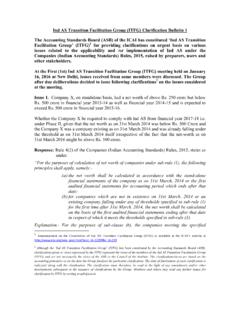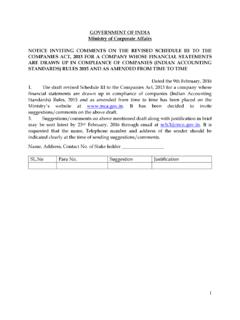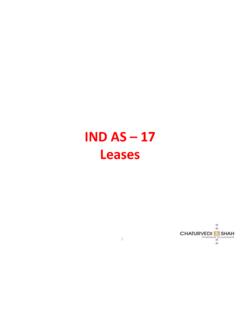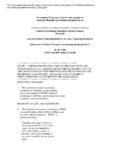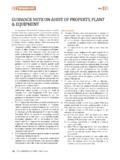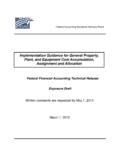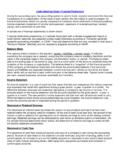Transcription of IND AS -16 Property Plant and Equipments
1 IND AS -16 Property Plant and Equipments Ashish Mistry / Jignesh Mehta IND AS -16: Property Plant and Equipments AS 10 : accounting for fixed assets AS 6 : Depreciation accounting Schedule II of CA2013 Scope Definition Recognition and Measurement Subsequent Measurement Depreciation Component accounting De-recognition & Impairment Certain other differences - IND AS & Existing AS Disclosure Requirements First time adoption Key Differences IND AS & ICDS accounting for all Property , Plant and equipment unless another Standard requires or permits a different accounting treatment.
2 Does not Apply to: Property Plant & equipment classified as held for sale (IND AS 105) Biological Assets related to Agricultural activity (IND AS 41) Exploration and evaluation assets (IND AS 106) Mineral rights and mineral reserves Also applies to Investment Property Cost Model (IND AS 40) Scope Existing AS 10 provides for other specific exclusions like -Live stock -Expenditure on Real Estate Developments DEFINATIONS Property , Plant and equipment ( PPE ) Definition spare parts, stand-by equipment are recognised as PPE when they meet the above definition of PPE RECOGNITION AND MEASUREMENT Recognition and Measurement Property , Plant & equipment shall be recognized as an asset when: Future economic benefits are probable Cost can be measured reliably Criteria apply to all costs when incurred, including Initial acquisition or construction costs Subsequent Costs Property , Plant equipment is measured initially at cost.
3 Existing AS 10 allows to capitalise the subsequent cost when it increases the future benefits beyond its previously assessed standard of performance. Elements of Cost All costs involved in bringing the asset to the present location and condition necessary for it to be capable of operating in the manner intended by management. Cost Elements Purchase Costs Directly attributable Costs Other Costs Purchase Costs Import Duties/ Non Refundable Taxes Deduct trade discounts/ rebates Cost of Employee benefits Cost of Site Preparation Initial delivery and handling Costs Transport handling Charges Installation and assembly costs Cost of testing Professional Fees Initial estimates of dismantling costs.
4 Initial estimates of site restoration costs Major inspection costs Cost of Replacements Costs of Opening a new facility Costs of introducing a new product or service or conducting business in a new location; Administrative and other general overheads Cost Element - Exclusion Existing AS 10 Admin & Gen Ohds are usually excluded, however in some circumstances such expenses are specifically attributable to construction / acquisition of asset then can be capitalized. Elements of Cost Elements of Cost Initial operating losses charged to P&L Abnormal losses and profits in case of self constructed asset charged to P&L Incidental operations during construction period charged to P&L payment is deferred beyond normal credit terms, the difference between the cash price equivalent and the total payment is recognised as interest Key impacts Trial run Interest income during construction period Expenses incurred by new company promoted to set up new Plant .
5 Elements of Cost Existing AS 10 Spares which can be used only in connection with a fixed assets and whose use is expected to be irregular, can be capitalized - Standby assets and Servicing equipment are generally capitalized. Spare parts, stand-by equipment & Servicing equipment These are recognized in accordance with this IND AS when they meet the definition of PPE Otherwise such items are classified as Inventory Exchange of Assets If PPE is acquired in exchange for other non monetary asset or for a combination of monetary asset Measure costs at Fair value, unless.
6 -The exchange transaction has no commercial substances, or - Fair value of neither the asset received nor given up can be reliably measured If the acquired item is not measured at fair value, its cost is measured at the carrying amount of the asset given up. SUBSEQUENT COST AND MEASUREMENT Subsequent Measurement Can choose Cost Model or Revaluation Model as its accounting policy Adopted option as accounting policy will apply to entire class of PPE Revaluation shall be done with sufficient regularity to ensure that there is no significant gap between FV and Carrying Value Under revaluation model, carrying amount restated with reference to available observable market data Existing AS 10 Revaluation approach adopted therein is ad hoc in nature.
7 As adoption does not require as a part of accounting policy and independent asset can be revalued. Also frequency of revaluation not specified. Revaluation Model Revaluation Recognized directly in Other Comprehensive Income & accumulated under Equity in revaluation surplus Debit revaluation Surplus to the extent recognized previously and balance, if any, Charge to Profit or Loss A/c. The revaluation surplus may be transferred to retained earnings when the assets is derecognized or as it is used by the entity (not through Profit & Loss) Upward Downward Existing GN on Treatment of Reserve created on revaluation state if any additional depreciation on revalued amount charged to P&L then accumulated additional depreciation on revalued amount can be moved from Revaluation Reserve to P&L / Gen Res as the case may be Subsequent Cost - Part Replacement Day to day servicing cost are charged to P&L Some items involve a series of linked parts which require regular replacement at different intervals and have different useful lives.
8 Recognize the cost of replacing a part in the carrying amount, if recognition criteria are met. The carrying amount of replaced parts is derecognized For Example, a furnace may require relining after a specified number of hours of use, or aircraft interiors such as seats and galleys may require replacement several times during the life of the airframe. Subsequent Cost Major inspection/ Overhaul Costs Performing regular major inspections for faults, regardless of parts being replaced or not, may be a condition of continuing to operate an item of Property Plant and equipment .
9 Cost of each major inspection performed is recognized in carrying amount, as a replacement, if the recognition criteria are met. Any remaining carrying amount of the cost of the previous inspection is derecognized. DEPRECIATION Depreciation Depreciation begins when the asset is available for use (ie when it is in the location and condition necessary for it to be capable of operating in the manner intended by management) & continues until the asset is derecognized or classifies as held for sale. The Residual value Amount can be obtained from disposal ( ) costs of disposal The residual value & the useful life of an asset shall be reviewed at least at each financial year end, and if expectations differs from previous estimates, the change shall be accounted for as a change in accounting estimates.
10 Depreciable Amount = Cost - Residual Value Useful Life of Asset- Key Factors All the following factors are considered in the determining the useful life of an asset: Expected usage of the asset. Expected physical wear and tear depending on operational factors Technical or commercial obsolescence arising from : Changes or improvement in production; Change in Market demand for production Legal or similar limits on the use ( Expiry dates of related leases) Asset Management policy may involve disposal of asset after a specified time Therefore, useful life may be shorter than economic life Repairs and Maintenance policies may also affect useful life.



